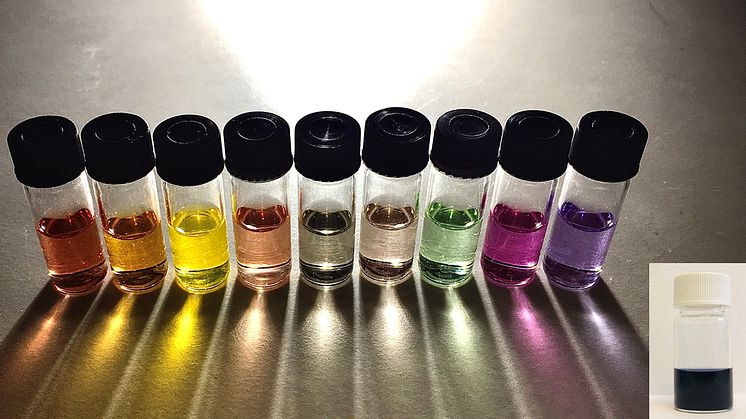
Press release -
Producing more sustainable hydrogen with composite polymer dots
Hydrogen for energy use can be extracted in an environmentally friendly way from water and sunlight, using photocatalytic composite polymer nanoparticles developed by researchers at Uppsala University. In laboratory tests, these “polymer dots” showed promising performance and stability alike. The study has been published in the Journal of the American Chemical Society.
How we are to meet future demand for sustainable energy is a much-debated question. One feasible way to go is hydrogen, which can be produced from renewable resources: water and solar energy. But the process requires what are known as photocatalysts. Traditionally, these have been made of metal-based materials that are often toxic. Instead, a research group headed by Haining Tian at Uppsala University’s Ångström Laboratory is working to develop nano-sized organic photocatalysts – “polymer dots” – designed to be both environmentally friendly and cost-effective.
Since polymer dots (Pdots) are so tiny, they are evenly distributed in water. Compared with traditional photocatalysts, this provides a larger reaction surface, which means that more light can be stored in the form of hydrogen gas. The research group has now developed a Pdot containing three components. In tests, the particle has shown very good catalytic performance and stability.
“Combining several components that absorb light at different wavelengths is the easiest way to create a system in which all the visible surfaces capture light. But getting these components to work well together in a photocatalytic system is challenging,” says Haining Tian, Associate Professor (Docent) of Physical Chemistry at Uppsala University.
To investigate how well the various components work together, Tian and his colleagues used spectroscopic techniques in which the Pdot was exposed to light for a certain length of time. They were thus able to follow how photochemical intermediates were created and, under illumination, disappeared.
“It’s exciting to see that both ultrafast energy transfer and electron transfer take place in one particle, and that this helps the system to make use of the light and separate the charge for the catalytic process,” says the study’s lead author Aijie Liu, a postdoctoral researcher at the Department of Chemistry – Ångström Laboratory.
The researchers have succeeded in optimising the system of triple-component polymer dots so that it catalyses the conversion of solar energy into hydrogen with a 7% efficiency rate at 600 nanometres (nm). This is significantly better than the 0.3% at 600 nm obtained by the group when they were working on Pdots consisting of only one component. One problem has previously been that the photocatalysts degrade prematurely, but now the researchers were unable to discern any distinct degradation even after 120 hours’ testing.
Aijie Liu et al. (2020), Panchromatic Ternary Polymer Dots Involving Sub-Picosecond Energy and Charge Transfer for Efficient and Stable Photocatalytic Hydrogen Evolution, Journal of the American Chemical Society. DOI: 10.1021/jacs.0c12654
For more information, please contact:
Haining Tian, docent at the Department of Chemistry – Ångström, Uppsala University.
Tel: +46 18 471 3640, email: haining.tian@kemi.uu.se
Topics
Uppsala University
The first University in Sweden. Quality, knowledge, and creativity since 1477. Education and research of the highest quality and relevance to society, business, and culture. Uppsala University is ranked among the world’s top higher education institutions. www.uu.se

